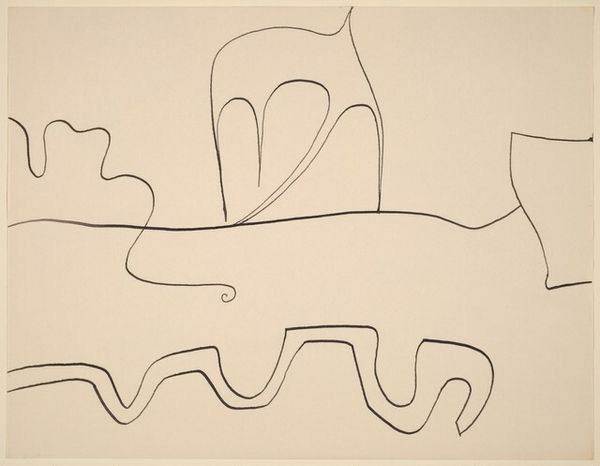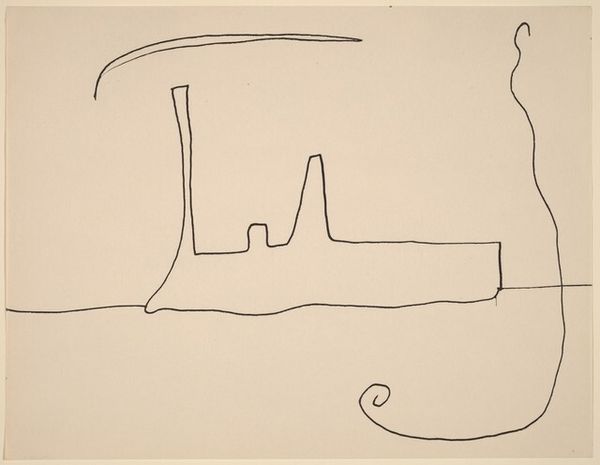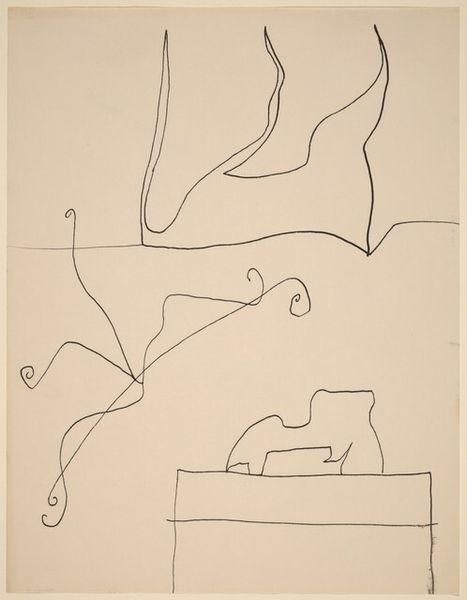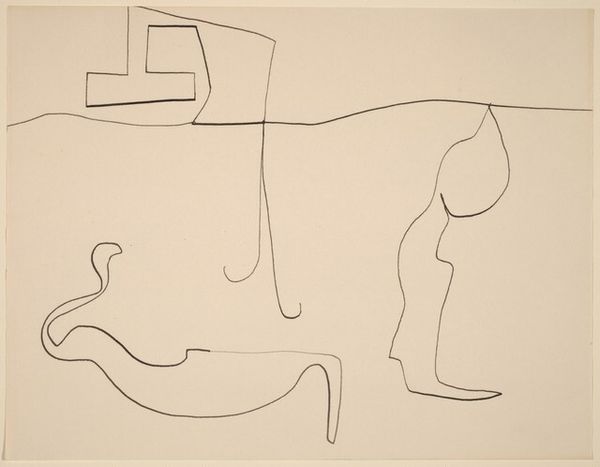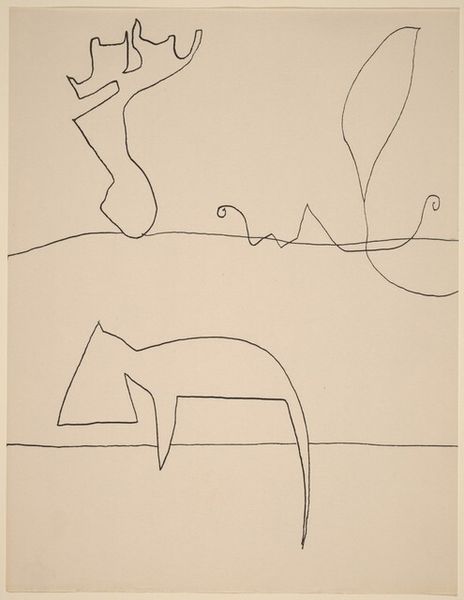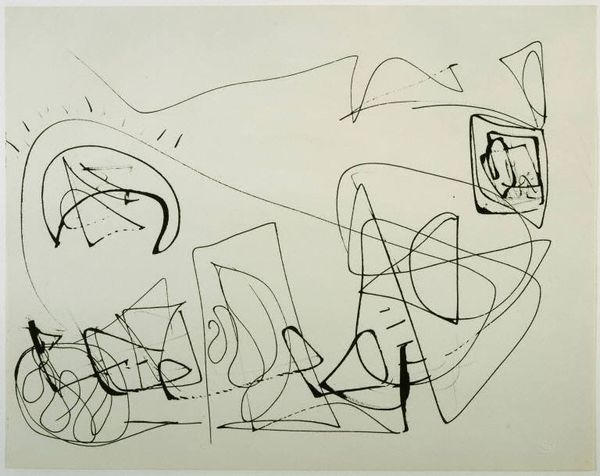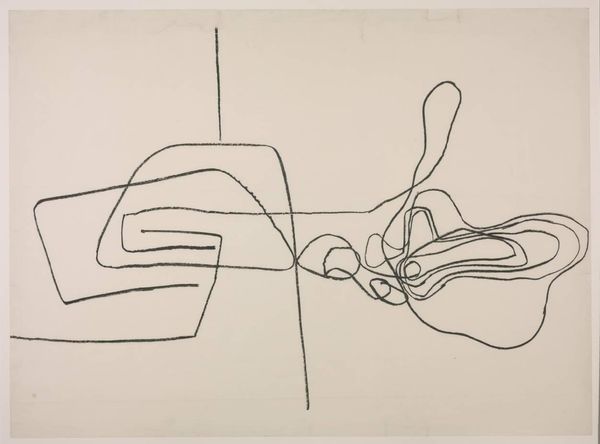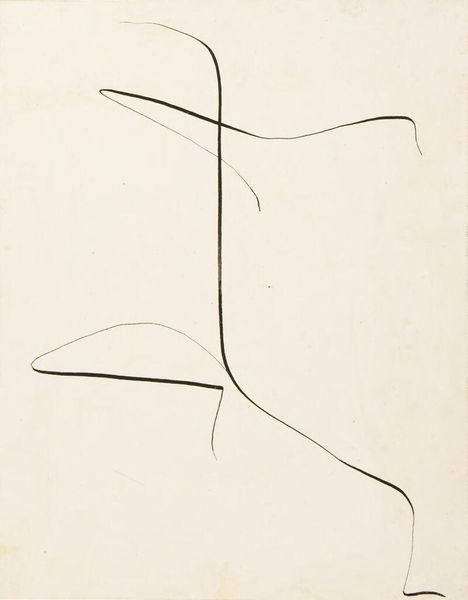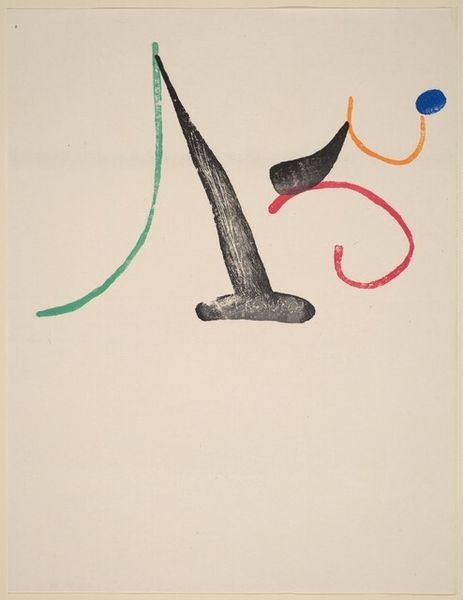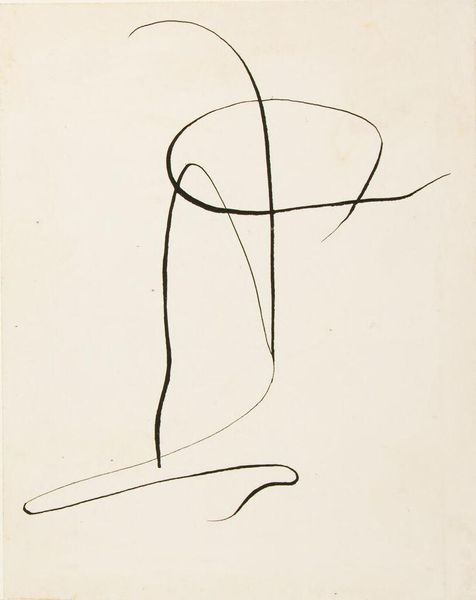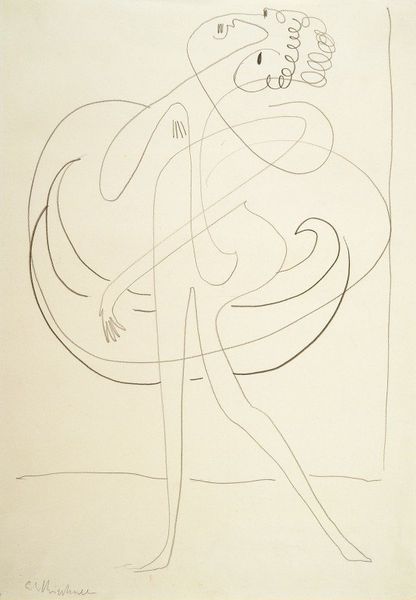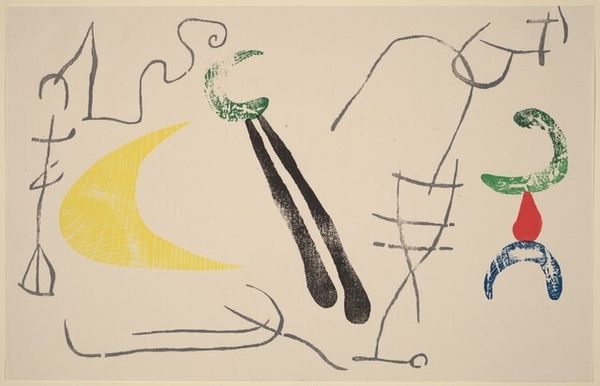
drawing, paper, ink
#
abstract-expressionism
#
drawing
#
non-objective-art
#
paper
#
ink
#
geometric
#
abstraction
#
line
Dimensions: overall: 21.6 x 27.9 cm (8 1/2 x 11 in.)
Copyright: National Gallery of Art: CC0 1.0
Curator: The first thing that strikes me about this ink drawing is its whimsical, almost playful nature. The free-flowing lines seem to dance across the page. Editor: This "Untitled" work dates from the 1950s and is attributed to William Baziotes, an artist central to the abstract expressionist movement. We see here his engagement with automatism, embracing chance and the subconscious in his art. Curator: Automatism really unlocks it for me. You can feel the intuitive gesture in each stroke. It's not striving for representation; rather, it is presenting something more primordial. This raw, immediate quality feels almost rebellious, especially considering the societal constraints of the era and what they expected of art, and from the women artists included in that time, especially. Editor: Precisely! Abstraction, especially in post-war America, represented freedom, a breaking away from tradition, but also an active engagement with then-current discourses on existentialism and the search for meaning in a fractured world. We can analyze its relationship with the rise of consumer culture too. The image allows interpretation while challenging norms in public art spaces. Curator: Absolutely. It feels like a window into Baziotes' internal landscape, an invitation to contemplate our own. The line, at once fragile and assertive, suggests the precariousness of existence and identity in its performance and creation. I particularly feel it in that geometric form, an assertion with just the bare minimum. Editor: We must also remember that while many see it as liberating, that perceived freedom was only afforded to specific individuals and that historical framework impacts any viewing of an artwork within a public institution like this. Do you agree with that, though, regarding seeing it as fragile and assertive? It feels more uncertain to me. Curator: Interesting! I appreciate the historical point as that gives greater context, and now I see how uncertainty makes more sense. This quick experience helped unlock for me an insight on my own lived experience, too! Editor: Art helps to reflect society and social norms in its time. This reminds me how a gallery creates art, its social history, but that deserves further discussion another time.
Comments
No comments
Be the first to comment and join the conversation on the ultimate creative platform.
